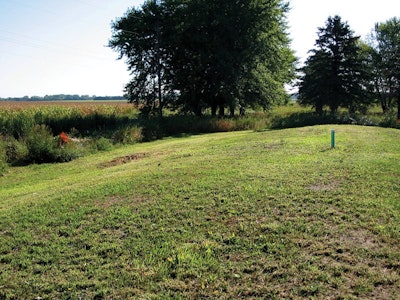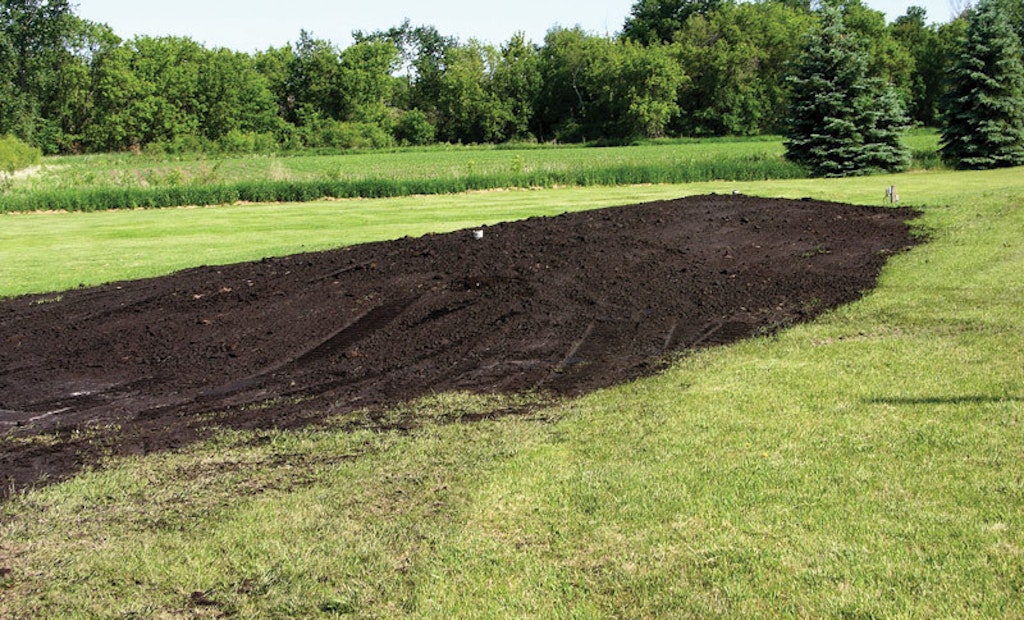Interested in Education/Training?
Get Education/Training articles, news and videos right in your inbox! Sign up now.
Education/Training + Get AlertsLast month we considered some aspects of landscaping and planting around soil treatment areas. This month we take a little closer look at planting and landscaping guidelines for onsite systems.
If you’re establishing ground cover, topsoil should be added to a minimum of a 6-inch depth. Keep in mind applying more than the 6 inches, in effect, buries the system just that much deeper below the surface, working against the principle of keeping systems shallow for good water and oxygen exchange.
So while you may need to apply more soil to smooth contours and make the system fit in, add no more than 36 inches of total cover over the drainfield media, and less is better. Therefore, if the drainfield media were at a 24-inch depth before applying topsoil, the depth of topsoil should be a minimum of 6 inches and no more than 12 inches over the area. Recognize also that adding soil to the surface may require extending risers and inspection ports to the surface.
In general, there should be a minimum of tilling or surface preparation when planting. At the same time, the goal is to get vegetation established as quickly as possible to prevent soil erosion. Likewise, maintaining vegetation should not require working the soil excessively. Homeowners often ask us if they can plant vegetables. The answer is no, for two reasons: the potential for contact with the sewage, which can cause illness; and maintaining vegetable gardens requires extensive tillage.
EASY-CARE GRASSES
If the choice is turf grass, there are two ways to establish the lawn: through sodding or seeding. One obvious advantage of sod is immediate cover over the system, and it can be laid any time during the growing season. The disadvantages are expense and there is probably not the variety of grass material found when seeding.
The broad selection of grasses is the big advantage for seeding. You can move from the high maintenance Kentucky bluegrass to fine fescues that are more drought-tolerant and require little mowing during the year. There are also mixes of bluegrass and fescues available. Depending on the slopes at the site and the location of the mound or at-grade system, a combination of seeding and sod application can be employed to help prevent erosion.
Whether seeding with turf grass or establishing native grasses or wildflowers, erosion control is important to keep the soil in place and to establish uniform cover. While the grasses or perennials are being established, some type of erosion control blanket or mulch should be used. Mulch is appropriate for level sites, while erosion control blankets are good for side slopes of mound or at-grade systems. The blankets are composed of numerous types of materials, depending upon your location. They can be made up of straw, coconut, jute or other materials that will biodegrade over time. The blanket is staked in place covering the entire surface area to be protected. Holes can then be cut in the material to plant the wildflowers or perennials.
Use of native vegetation, including wildflowers and perennial grasses, is becoming more popular across the country. In Minnesota, where we live, this reflects a desire to have some flowers and color along with lower maintenance requirements of native plants. In more arid regions, the choice is more by necessity. Native plants are uniquely adapted to the drier climates and they will do well with little attention. They also fit the desire for plantings with fibrous root systems rather than tap roots and they like drier sites, so are less likely to seek out water and interfere with the system.
HOMEOWNER TIPS
Here are a few points to emphasize with homeowners so they don’t harm the system or themselves while caring for native plants:
Wear gloves for personal protection when working in these areas. And discourage frequent working of soil in a treatment area or where the septic tank is located. Suitable native vegetation will do well without constantly working the soil, which could result in compaction problems. Cold regions require continuous ground cover to help insulate the system, so cleaning up the perennial bed in the fall should be discouraged. That material should be left in place.
Any type of traffic over the system should be discouraged to protect the soil and the system from compaction and, in cold climates, from forcing frost deeper into the ground causing freezing problems. We see this condition a lot with mound systems, where the higher spot on the lawn makes an ideal parking place for ATVs or snowmobiles. In drier, warmer areas, these open areas seem to attract cars or RVs. Any of this activity can have a negative impact on the system.
In humid climates, shrubs and trees around systems can create numerous problems. They fail to provide the year-round erosion control and require additional maintenance, which can create compaction problems and interfere with piping and sewage tanks.
From a landscaping standpoint, shrubs and trees – if kept away from the system – can be used to frame the area. Shrubs should be at least 20 feet away and trees at least 50 feet away from onsite systems. In drier areas, it’s even more important to keep trees and shrubs away. In the desert southwest, we are often presented with pictures of root intrusion from a variety of vegetation types searching for water. Of particular note are nonnative species of ornamental palm trees and others. They are aggressive at seeking water to survive and are not a good fit for dry sites.
As always, the key is talking through homeowner preferences for the site and then working with the plant materials that fit the environment.







